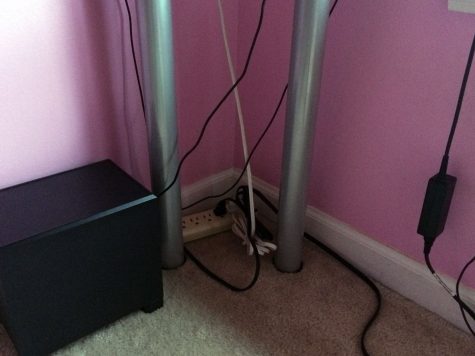Do Black Holes Sing in the Vacuum of Space?
Contrary to popular belief, scientists have recently discovered that some black holes emit songs many octaves below human hearing.
In a galaxy cluster known as the Perseus Cluster 300 million light-years away from Earth, a supermassive black hole has been singing a note for 2.5 billion years. The tone registers as about 57 octaves below middle C according to NASA’s Chandra X-Ray Center, making it an immense B-flat.
“Is this going to lead to exploration of black holes?” sophomore Shannon Price said. “It’s very interesting.”
Sound requires something to travel through: air or water. On Earth, sound waves travel by vibrating surrounding air molecules. The vibrations travel from one molecule to another and are perceived as sound when they reach the ear. Unfortunately there isn’t air or water in the vastness of space, and it’s hard for sound to travel.
It takes a supermassive black hole for sound to travel in space. Black holes are gargantuan, ranging from hundreds of thousands to tens of billions of times our sun’s mass. They can commonly be found in the center of active galaxies. Sagittarius A*, a supermassive black hole, exists in the center of our own Milky Way galaxy.
Black holes have immense gravitational pull, so immense that nothing escapes, according to popular belief. However, this may not be entirely true. Black holes do pull matter and energy into their accretion disk- a ring shaped structure formed by gas and dust- but some of this matter is expelled from the poles of the black hole as “relativistic jets.” These jets surge into the gas surrounding the black hole and forms air pockets in the otherwise nearly uniform cloud.
“Sound waves are pressure waves. And black holes, or a least their relativistic jets, can generate enormous sound waves, which then propagate through surrounding galactic gas,” astronomer Steven Allen, a professor of physics at Stanford University said, according to Scientific American. “When relativistic jets, which contain material moving at close to the speed of light slam into the hot gas that pervades giant elliptical galaxies and clusters of galaxies, they beat a ‘galactic drum’ as it were. ”
The jets act like a “stick” with the surface of the gas acting like the “drum.”
Although human ears can’t hear these “waves,” sound doesn’t travel in the vacuum that separates the “drum” and us, we can see them using x-ray observations. These sound waves spread through the scorching gas in galaxies and galaxy cluster, regions of higher pressure appear brighter and lower pressure appear dimmer. The higher pressure regions indicate sound wave peaks and the lower, troughs.
The Chandra x-ray of the Perseus Cluster show vaguely concentric ripples of brighter and fainter gas, something that indicates sound waves.
“We can’t see the waves moving,” Allen said.”The relevant timescales are too long, since the period of the waves is about 10 million years- but we don’t have a clear ‘snapshot’ of them.”
The Perseus Cluster’s black hole is not the universe’s only vocalist. M87, a galaxy that holds one of the universe’s most massive black holes is also known to belt it out. Although it isn’t as steady as Perseus, it is more involved, containing notes as deep as 59 octaves below middle C.

Her favorite quote is "She wasn't looking for a knight, she was looking for a sword." - atticus.











